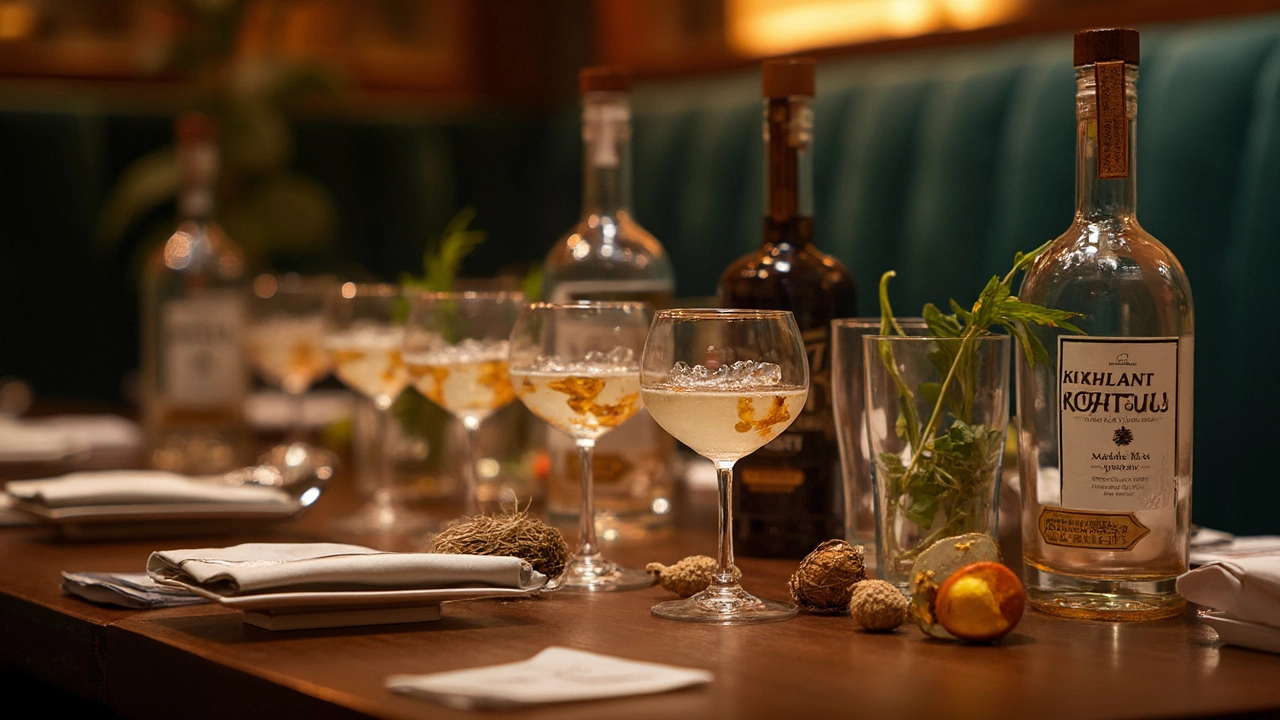Gin Taste Guide: Spotting Flavours and Picking the Right Bottle
Ever wondered why some gins taste fresh and bright while others feel heavy and spicy? The answer lies in the botanicals and how they’re blended. This guide breaks down the basics so you can sniff, sip, and decide what you really like – no fancy jargon needed.
The Five Main Gin Flavour Families
1. Classic Juniper‑Forward. If the first thing you notice is piney, resinous notes, you’re probably tasting a traditional London dry. Juniper dominates, and you’ll also catch subtle citrus or angelica hints.
2. Citrus‑Bright. These gins load up on lemon, orange, or grapefruit peel. The result is a clean, zesty sip that works great in a simple G&T or a Tom Collins.
3. Floral & Herbal. Think lavender, rose, or rosemary. The aroma feels perfume‑like, and the taste stays light. Ideal for summer cocktails that need a delicate touch.
4. Spice‑Rich. Cardamom, pepper, cinnamon, and even ginger add warmth. These gins feel cozy and pair well with whiskey‑based drinks or a spiced martini.
5. Contemporary & Experimental. Modern distillers throw in unexpected ingredients – cucumber, seaweed, or even chocolate. The flavour can be surprising, perfect for adventurous drinkers.
Step‑by‑Step Gin Tasting Method
Look. Hold the glass up to light. A clear gin means it’s well‑filtered; a slight haze can signal an unfiltered or barrel‑aged style.
Swirl. Give the liquid a gentle swirl. This releases volatile aromatics, making the nose work easier.
Smell. Bring the glass to your nose and inhale slowly. Try to pick out the top three notes – is it pine, lemon, floral, or spice?
Sip. Take a small sip, let it coat your tongue. Notice the balance between the first hit (the “nose”) and the middle body. Does any flavour dominate?
Finish. Pay attention to how long the taste lingers. A long, clean finish usually means a higher quality gin.
Practice these steps with a few different bottles. You’ll start to see patterns – maybe you prefer citrus‑bright gins for daytime, and spice‑rich ones for winter evenings.
When you’re choosing a gin for cocktails, match the flavour family to the drink. A citrus‑bright gin shines in a classic G&T, while a spice‑rich gin can turn a simple martini into a warm nightcap.
Price isn’t always a guarantee of taste, but very cheap gins often cut back on botanicals, leaving a flat profile. Mid‑range bottles (around £25‑£35) usually offer a balanced blend without breaking the bank.
Finally, have fun. Gin is meant to be explored – try a new brand each month, compare notes with friends, and keep a tiny journal of what you liked. The more you practice, the quicker you’ll spot the perfect gin for any occasion.
Kirkland gin, a popular choice among gin enthusiasts, offers a distinct taste that invites comparisons with some well-known brands. When examining its flavor profile, you might find hints of elegance reminiscent of higher-end options. This article explores how Kirkland gin stacks up against other gins and gives insights into planning distillery tours. You’ll find useful tips on getting the most out of your next gin tasting adventure.
View Details

